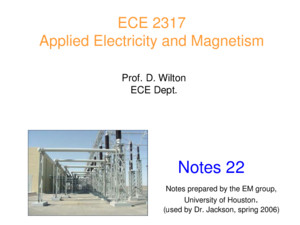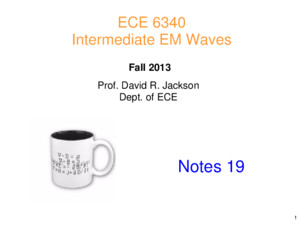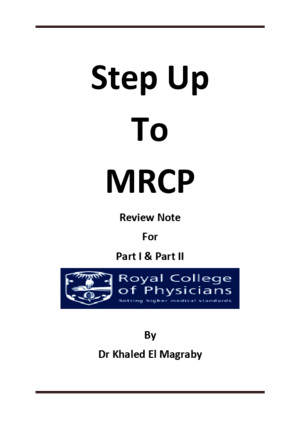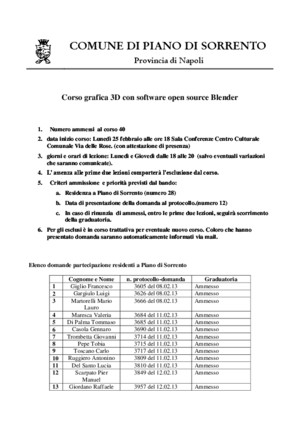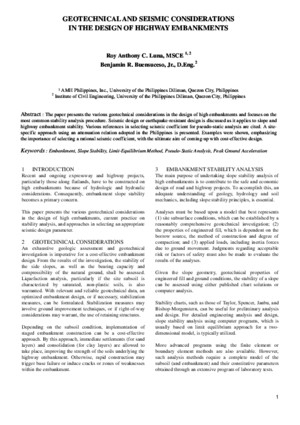Prof D Wilton ECE Dept Notes 16 ECE 2317 Applied Electricity and Magnetism Notes prepared by the EM group, University of Houston
There is document - Prof D Wilton ECE Dept Notes 16 ECE 2317 Applied Electricity and Magnetism Notes prepared by the EM group, University of Houston available here for reading and downloading. Use the download button below or simple online reader.
The file extension - PDF and ranks to the Documents category.
Tags
Related
Comments
Log in to leave a message!
Description
Download Prof D Wilton ECE Dept Notes 16 ECE 2317 Applied Electricity and Magnetism Notes prepared by the EM group, University of Houston
Transcripts
Slide 1 Prof D Wilton ECE Dept Notes 16 ECE 2317 Applied Electricity and Magnetism Notes prepared by the EM group, University of Houston Slide 2 Curl of a Vector x y z CxCx CyCy CzCz SS SS SS Note: Paths are defined according to the “right-hand rule” Slide 3 Curl of a Vector (cont) “curl meter” Assume that V represents the velocity of a fluid Slide 4 Curl Calculation y z yy Path C x : zz 1 2 3 4 CxCx (side 1) (side 2) (side 3) (side 4) Slide 5 Curl Calculation (cont) Though above calculation is for a path about the origin, just add ( x,y,z ) to all arguments above to obtain the same result for a path about any point ( x,y,z ) Slide 6 From the curl definition: Hence Curl Calculation (cont) Slide 7 Similarly, Hence, Curl Calculation (cont) Note the cyclic nature of the three terms: x y z Slide 8 Del Operator Slide 9 Del Operator (cont) Hence, Slide 10 Example Slide 11 Example x y Slide 12 Example (cont) x y Slide 13 Summary of Curl Formulas Slide 14 Stokes’s Theorem : chosen from “right-hand rule” applied to the surface “The surface integral of circulation per unit area equals the total circulation” C S (open) Slide 15 Proof Divide S into rectangular patches that are normal to x, y, or z axes Independently consider the left and right hand sides (LHS and RHS) of Stokes’s theorem: C S Slide 16 Proof (cont) S C Slide 17 Hence, (Interior edge integrals cancel) S C C Slide 18 Example Verify Stokes’s theorem for ( dy = 0 ) x = a, z= const y CACA CBCB C ( x = 0 ) C ( dz = 0 ) Slide 19 Example (cont) x = a y CBCB A B Slide 20 Example (cont) Alternative evaluation (use cylindrical coordinates): Now use: or Slide 21 Example (cont) Hence Slide 22 Example (cont) Now Use Stokes’s Theorem: Slide 23 Rotation Property of Curl (constant) S (planar) CC The component of curl in any direction measures the rotation (circulation) about that direction Slide 24 Rotation Property of Curl (cont) But Hence Stokes’s Th: Proof: Taking the limit: (constant) S (planar) CC Slide 25 Vector Identity Proof: Slide 26 Vector Identity Visualization : Edge integrals cancel when summed over closed box! Slide 27 Example Find curl of E : s0s0 l0l0 q 1 2 3 Infinite sheet of charge (side view) Infinite line charge Point charge Slide 28 Example (cont) s0s0 1 x Slide 29 l0l0 2 Slide 30 q 3 Slide 31 Faraday’s Law (Differential Form) Hence Stokes’s Th: Let S 0: small planar surface (in statics) Slide 32 Faraday’s Law (cont) Hence Slide 33 Faraday’s Law (Summary) Integral form of Faraday’s law Differential (point) form of Faraday’s law Stokes’s theorem curl definition Slide 34 Path Independence Assume A B C1C1 C2C2 Slide 35 Path Independence (cont) Proof A B C C = C 2 - C 1 S is any surface that is attached to C (proof complete) Slide 36 Path Independence (cont) Stokes’s theorem Definition of curl Slide 37 Summary of Electrostatics Slide 38 Faraday’s Law: Dynamics In statics, Experimental Law (dynamics): Slide 39 magnetic field B z (increasing with time) x y electric field E ( assume that B z increases with time) Faraday’s Law: Dynamics (cont) Slide 40 Faraday’s Law: Integral Form Apply Stokes’s theorem: Slide 41 Faraday’s Law (Summary) Integral form of Faraday’s law Differential (point) form of Faraday’s law Stokes’s Theorem Slide 42 Faraday’s Law (Experimental Setup) magnetic field B (increasing with time) x y + - V > 0 Note: the voltage drop along the wire is zero Slide 43 Faraday’s Law (Experimental Setup) x y + - V > 0 Note: the voltage drop along the wire is zero S C Hence A B Slide 44 Differential Form of Maxwell’s Equations electric Gauss law magnetic Gauss law Faraday’s law Ampere’s law Slide 45 Integral Form of Maxwell’s Equations electric Gauss law magnetic Gauss law Faraday’s law Ampere’s law


